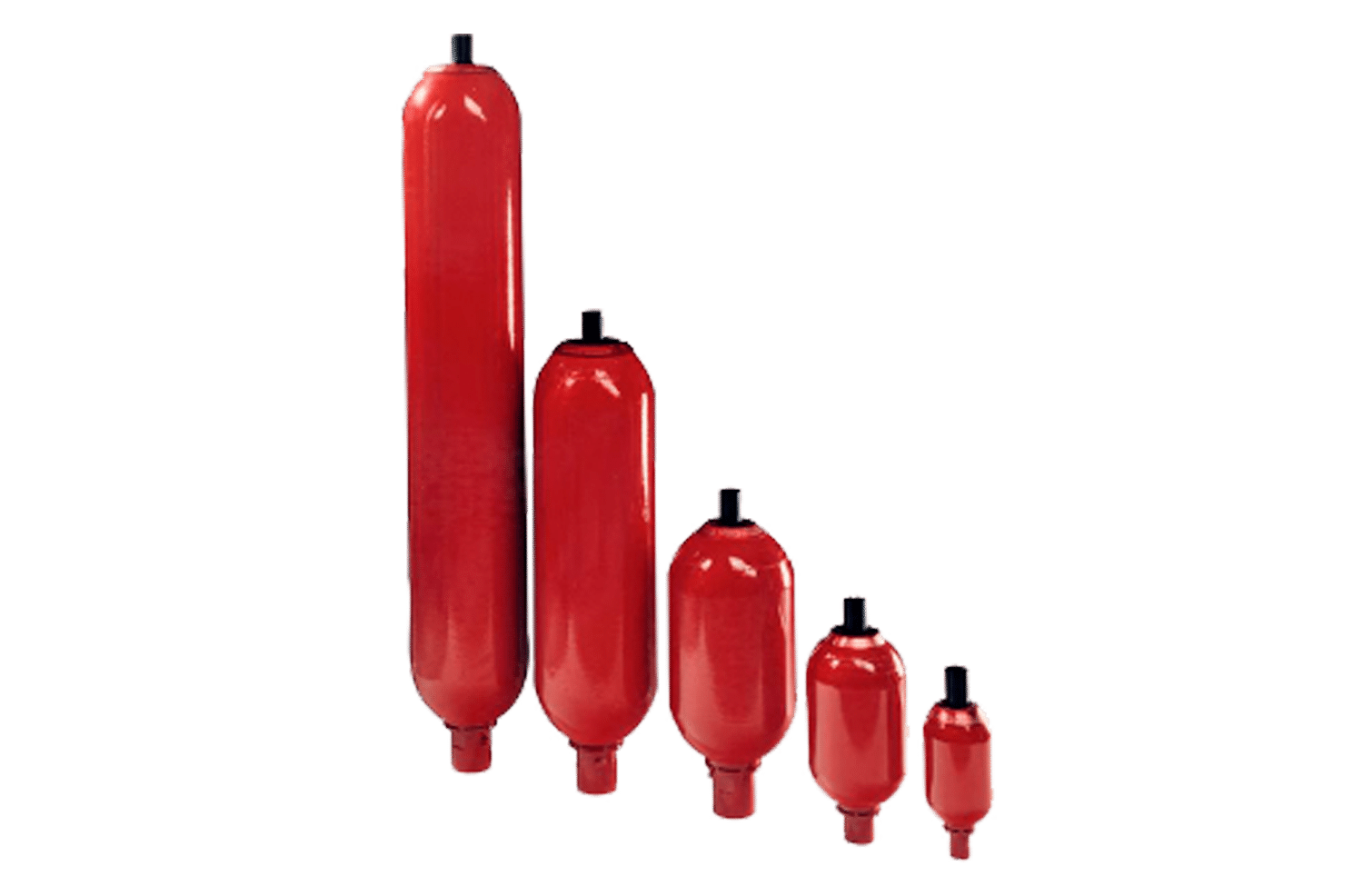The ACCUMULATORS for wind turbines are used, together with the hydraulic power units to control the pitch of the blades, as an auxiliary energy storage device (to rotate the blade in an agile and safe way to a neutral position in extreme wind conditions) and, in the event of a power failure, as a source of power to activate the brake calipers of the high-speed axle and yaw brake systems. Therefore, it must always maintain enough pressure to guarantee its response, and consequently the optimal performance of the wind turbine.
Accumulators

Description
Types of accumulators for wind turbines
ABS supplies different types of accumulators for wind turbines. The most common are the Piston accumulators or the Bladder accumulators, and between both there are some differences in relation to their manufacturing characteristics and their performance:
Bladder accumulators
The bladder accumulator is composed of a high-resistance steel body divided inside by a part filled with hydraulic fluid connected to the circuit and another filled with the gas to be compressed, generally nitrogen. Both parts are separated by a bladder made of elastic material. When the fluid is introduced into the accumulator, the gas in the bladder is compressed and the pressure increases. The gas pre-charge pressure can be regulated via the inlet / outlet valve.
- Universal application
- Pollution tolerance
- Average flow rates
- Compliant to high-frequency pulsations
- Fast answer
- Pressure sensor
- Damping of oscillations, fluctuations, pulsations (pulsation dampener), shock (pressure dampener) and noise (silencer)
Piston accumulators
Is composed of a cylindrical body, sealed by a gas cap, with a charging valve at the gas end and a hydraulic cap at the hydraulic end. The gas side of the accumulator is separated from the hydraulic side by a lightweight piston.
Its design offers the highest efficiency and flexibility for most wind turbine applications due to a wide range of sizes and very low gas precharge loss in wind turbine testing.
- Can work in any position
- Unlimited sizes
- Better compression ratios
- More capacity
- Less loss of pre-charge
- Withstands external centrifugal forces
- High flow rates
- Tolerance to high and low temperatures
- High compression ratios
- Allows the placement of internal sensors (from 4 inches). The sensor can determine the location of the piston, something that allows, through a programmable controller (PLC), to determine if the precharge is correct and, if the accumulator loses pressure, it would indicate if the piston is in the place where it should be.